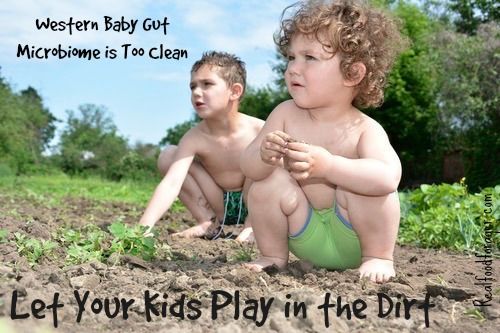Our Blog

by Dr Tom
•
13 Jul, 2021
Lactation Matters Microbiome Post Last year I collaborated with ILCA to publish a blog post based on my popular lecture on the Maternal-Child microbiome. They have agreed to allow me to cross-post that blog here. So without further ado, here you go. You can find the original entry at https://lactationmatters.org/2020/02/14/ten-things-ibclcs-need-to-know-about-the-gut-microbiome/ New understanding of how human milk affects the gut microbiome is helping to explain exactly how the benefits of human milk are achieved. We hear a lot these days about the gut microbiome—and with good reason. Evidence suggests that the bacteria in our gut influence virtually every aspect of our functioning, from our stress and anxiety responses, to our metabolism and appetite, to the robustness of our immune system, to even our experience of gender and mating. And when our gut microbiome is out of balance, research suggests negative consequences can result: depression and anxiety, obesity, irritable bowel syndrome, Alzheimer’s Disease, and asthma have all been linked to microbiome disruption. What does the gut biome have to do with breastfeeding? A lot, as it turns out. A webinar hosted by ILCA, Jarold “Tom” Johnston, DNP, CNM, IBCLC, explores that connection. Here, based on Johnston’s talk, are the 10 things lactation consultants need to know about the maternal-infant gut microbiome. 1. The microbiomes of baby and birthing parent are inextricably linked. When a person gives birth, they pass their microbiome to their baby—first through exposure to their normal flora in the birth canal and then through their milk during breast- or chestfeeding. 2. Communication is a two-way street. The milk ejection reflex is a muscular contraction that pushes milk out to the baby. But did you know that once the milk ejection reflex slows, muscles relax and pull baby’s saliva back in? Lactocytes respond to saliva exposure by producing particular macrophages. If the baby has been exposed to an infection, at the next feeding, he will get leukocytes and antibodies to fight that specific infection. 3. Colostrum is not really food. You read that correctly! Babies get very few calories at the breast during the first 48 hours, because the calories in colostrum are not intended for digestion. They come from immune cells, designed to populate the immune system. Rather than thinking of colostrum as calories, think of it as an immune system transfer. 4. Breastmilk sugars are more than food. Human Milk Oligosaccharides (HMOs) play a key role in developing the infant’s gut microbiome. Human milk contains more than 100 types of HMOs. (In contrast, cows’ milk contains only two.) Each HMO has a specific benefit for the infant’s gut microbiome. Some are prebiotics, acting to increase good bacteria in the gut. Others block the attachment of invading viruses and bacteria like RSV and e.coli by providing harmless “decoy” attachment sites. Another type coats the baby’s gastrointestinal tract, preventing pathogens from sticking. But none of them are digested by baby as carbohydrates until the baby is more than four months old. 5. A breasted baby’s gut microbiome is optimized for nutrition delivery. The breastfed infant’s gut contains a specialized group of bacteria known as the phosphotransferase system. This system transports lactose and makes it available for use. Breastfed babies have higher levels of phosphotransferase then formula-fed babies. This means breastfed babies can access the maximum amount of energy available in their breastmilk. This ensures a constant source of carbohydrate for the developing, glucose-dependent brain. Breastfed babies have higher numbers of gut bacteria that produce Vitamin A, B Vitamins, Vitamin K-2, and more. When they drink breastmilk, it feeds the bacteria colonies in their gut that make these micronutrients. Are you ever asked whether breastmilk contains enough iron, Vitamin K, or other nutrients? That question is misleading! Babies actually do not “get” these important micronutrients from the breastmilk they drink; what they get from breastmilk are the ingredients to feed a microbiome that can synthesize these micronutrients. 6. There are “bonus” calories in breastmilk. Epithelial cells in human milk (formerly thought to be dead) are actually alive, active, and functional. They form clusters (called mammospheres) in the baby’s gut and continue to make more milk! This means that for every calorie of breastmilk a baby takes in, he gets bonus calories as the epithelial cells continue to generate milk inside his gut. 7. Exclusively breastfed babies have “less mature” gut microbiomes, and that is a good thing. At birth, babies have very different proportions of specific bacteria in their gut microbiome compared to their birthing parent’s. Over the first 12 months of life, the baby’s microbiome shifts to strongly resemble the birthing parent’s. However, this shift is accelerated by the introduction of formula or the feeding of solid foods. As soon as the baby ingests anything other than human milk, the gut microbiome changes rapidly, and it does not go back. This may explain why formula fed infants experience more auto-immune and infectious illness. 8. Birth interventions affect the microbiome. Cesarean section birth reduces microorganism exposure. While infants born via vaginal birth show 135 of their mother’s 187 bacteria strains after birth, infants born via surgical delivery show only 55. Antibiotics given to Group Beta-Strep-positive parents during birth also have an effect, since they wipe out good flora in the birth canal. Exactly how these interventions affect long-term health is not yet clear, but continuing to think carefully about birth interventions is key. 9. What about special situations? Many of the mechanisms of microbiome transfer rely on birth and direct feeding. What about parents who exclusively pump, rely on donor milk, or induce lactation for an adopted baby? Exclusive pumping and the use of donor milk both impact the microbiome to some extent. Pasteurization of donor milk inactivates some of the living organisms in human milk, and exclusive pumping does not allow for the two-way communication discussed earlier where baby’s saliva is taken into the breast and informs lactocytes of the baby’s specific infection exposure. However, as you address parents’ concerns, what the science tells us now is that receiving human milk is more important than how it is the baby receives the milk. 10. Microbiome science is only a baby itself. It is important to remember that our understanding of the gut microbiome is just getting started. There is a long way to go, and much more to learn. However, for those of us who work with lactating families, the exciting news is: Understanding how the unique components of human milk interact with the infant’s gut organisms is helping us begin to understand how those benefits occur—they operate through the microbiome.

by mothershlc
•
03 Nov, 2020
I’m sorry that it has been so long since my last post. I suppose that my long breaks between blog posts means that I am really just talking to myself. That said, I was talking to myself again yesterday and I was struck by a thunderbolt. So here is my latest brain bender. I’m sorry … Continue reading →

by mothershlc
•
13 Oct, 2020
Heather writes: “My son is about to hit seven months and I’ve noticed lately that my milk production has decreased and I’m having a really hard time pumping, which is made worse because being in the Army I only get two twenty minute breaks to pump per day. Any advice?” Heather, I remember talking to … Continue reading →

by mothershlc
•
06 Oct, 2020
Today, I got three questions that deal with milk supply issues. This is the most common fear of most new mothers and the number one reason that women stop nursing before they planned. It is also, in my humble opinion, very rare that the breasts actually fail. I call it “Acute onset idiopathic lactation failure” and frankly, it … Continue reading →
by mothershlc
•
06 Oct, 2020
Some of you know that Dr. Johnston has a relatively inactive blog called Sage Homme’s Breastfeeding Blog. He has used it off and on over the years to answer some of the common questions mothers ask about breastfeeding. We have decided to migrate that blog over to Mother’s Helper so that we can reach a … Continue reading →
Content, including images, displayed on this website is protected by copyright laws. Downloading, republication, retransmission or reproduction of content on this website is strictly prohibited. Terms of Use
| Privacy Policy
